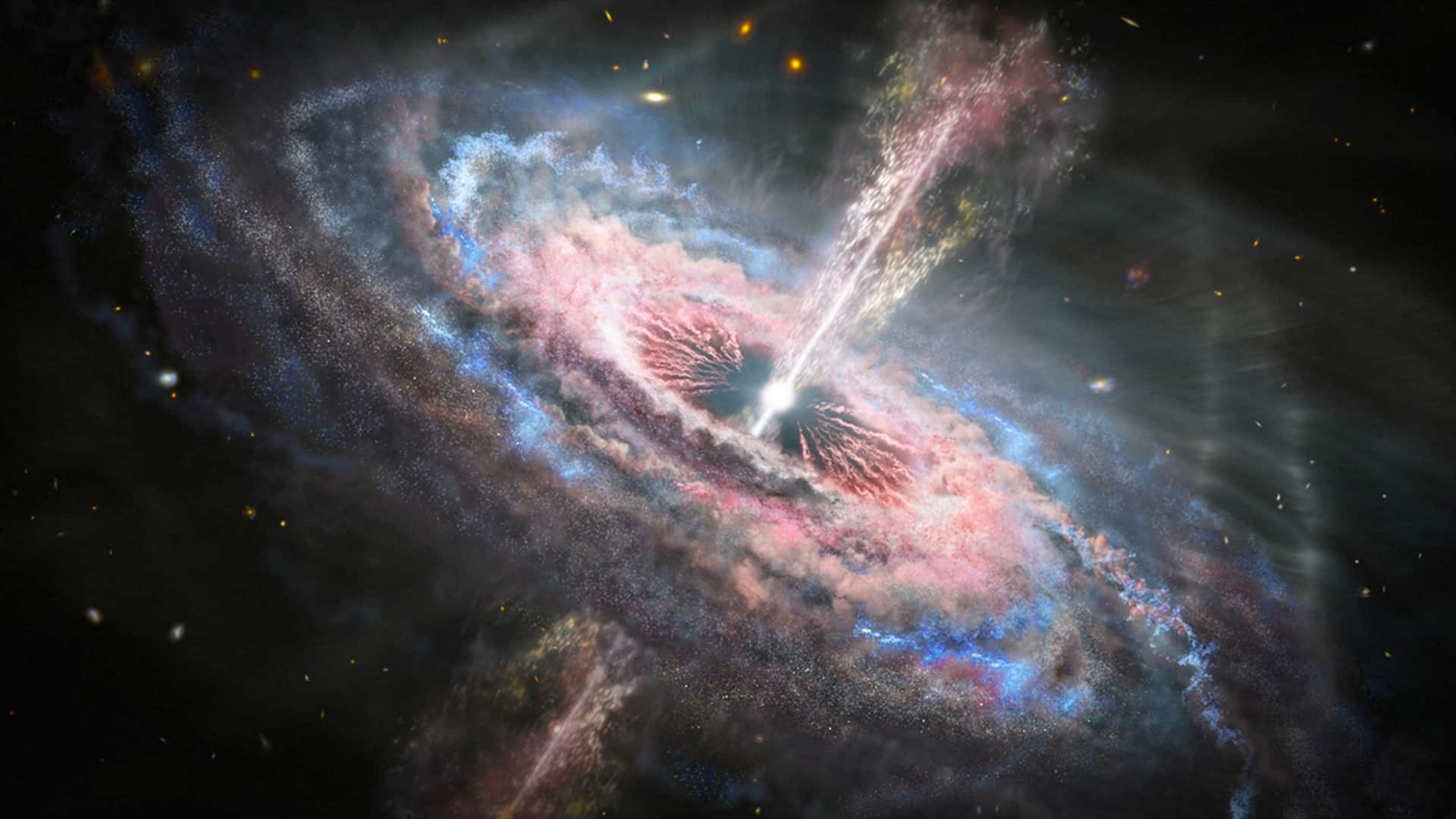Science
Astronomers Discover Unique Ultra-Luminous Galaxy Behind Quasar

An international team of astronomers has identified a unique ultra-luminous infrared galaxy (ULIRG) located behind the well-known quasar H1413+117, commonly referred to as Cloverleaf. This significant discovery was made using the Atacama Large Millimeter/submillimeter Array (ALMA) and detailed in a recent publication in the Monthly Notices of the Royal Astronomical Society. ULIRGs are recognized as some of the most actively star-forming galaxies in the universe.
The quasar Cloverleaf, which features a redshift of approximately 2.56, has presented an intriguing backdrop for this newly discovered galaxy. The study, led by Natsuki H. Hayatsu, reveals that the ULIRG lies around six arcseconds from the Cloverleaf quasar, with a redshift of about 3.39. This finding highlights the complex interactions between distant celestial objects and their environments.
The newly identified ULIRG possesses a molecular mass estimated between 40 billion and 230 billion solar masses, along with an estimated black hole mass of roughly 0.1 billion solar masses. The total X-ray luminosity of this ULIRG reaches approximately 400 tredecillion erg/s, with its infrared luminosity measured at around 2.8 trillion solar luminosities. These figures underscore the galaxy’s remarkable energy output and star-forming activity.
Significance of the Discovery
The molecular gas within this ULIRG is still in a dynamic state, likely due to an ongoing gas-rich major galaxy merger. The astronomers speculate that this merging process will fuel a sustained starburst phase, driven by the galaxy’s extensive molecular reserves. They propose that this ULIRG may be evolving towards various stages, including hot dust obscured galaxies (DOGs) or active galactic nuclei (AGN).
The researchers emphasize the necessity for further studies focused on the molecular gas composition of this galaxy to better understand its evolutionary status. They noted, “
To infer the evolutionary stage of such an optically dark galaxy, be it a massive starburst, QSO [quasi-stellar object], or hot DOG, it is essential to clarify the physical state of the gas.
” Future investigations will aim to address these questions and provide deeper insights into the galaxy’s development.
This discovery not only sheds light on the nature of ultra-luminous galaxies but also enhances our understanding of star formation in the early universe. As astronomers continue to explore these distant cosmic entities, the implications for our knowledge of galactic evolution remain profound.
-

 World5 months ago
World5 months agoSBI Announces QIP Floor Price at ₹811.05 Per Share
-

 Lifestyle5 months ago
Lifestyle5 months agoCept Unveils ₹3.1 Crore Urban Mobility Plan for Sustainable Growth
-

 Science4 months ago
Science4 months agoNew Blood Group Discovered in South Indian Woman at Rotary Centre
-

 World5 months ago
World5 months agoTorrential Rains Cause Flash Flooding in New York and New Jersey
-

 Top Stories5 months ago
Top Stories5 months agoKonkani Cultural Organisation to Host Pearl Jubilee in Abu Dhabi
-

 Sports4 months ago
Sports4 months agoBroad Advocates for Bowling Change Ahead of Final Test Against India
-

 Science5 months ago
Science5 months agoNothing Headphone 1 Review: A Bold Contender in Audio Design
-

 Top Stories5 months ago
Top Stories5 months agoAir India Crash Investigation Highlights Boeing Fuel Switch Concerns
-

 Business5 months ago
Business5 months agoIndian Stock Market Rebounds: Sensex and Nifty Rise After Four-Day Decline
-

 Sports4 months ago
Sports4 months agoCristian Totti Retires at 19: Pressure of Fame Takes Toll
-

 Politics5 months ago
Politics5 months agoAbandoned Doberman Finds New Home After Journey to Prague
-

 Top Stories5 months ago
Top Stories5 months agoPatna Bank Manager Abhishek Varun Found Dead in Well









